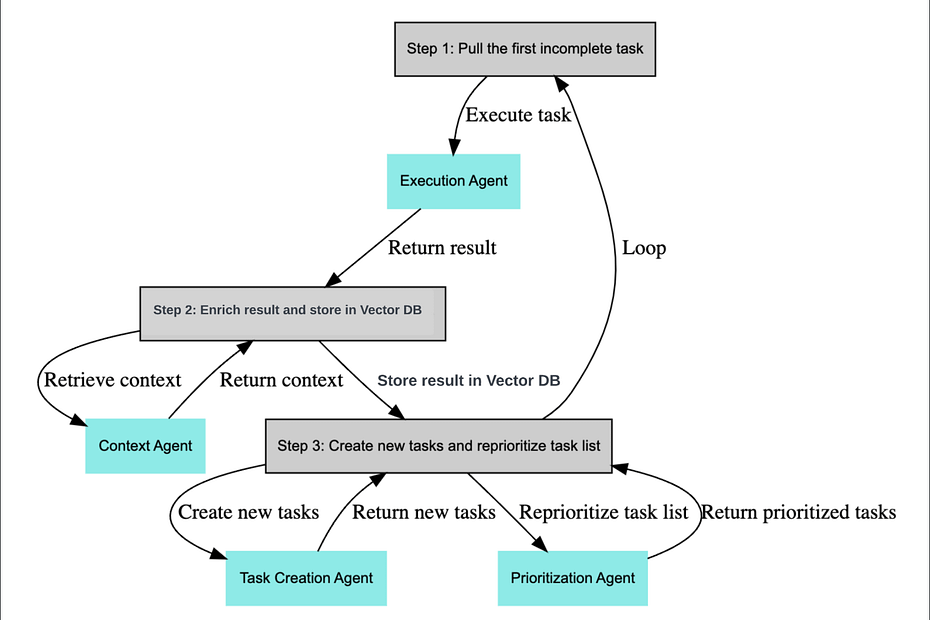Artificial general intelligence (AGI) is a type of artificial intelligence that can perform any intellectual task that a human being can. It is the holy grail of AI research, and many experts believe that it is only a matter of time before AGI is achieved.
What is Baby AGI?
Baby AGI is a new AI system that is being developed by NeuralInternet. It is not yet a true AGI, but it is a significant step towards that goal. Baby AGI is able to learn and adapt to new tasks, and it can also make its own decisions about how to complete those tasks.
One of the key features of Baby AGI is its use of the LangChain framework. LangChain is a language-based decision-making framework that allows Baby AGI to reason about its environment and make decisions based on its understanding of the world. This makes Baby AGI more versatile and capable than other AI systems that rely on simple rules or heuristics.
Baby AGI is a python script which uses OpenAI and Pinecone APIs, and the LangChain framework to create, organize, prioritize as well as the executing of tasks. The process behind Baby AGI is that it will create a task using predefined objectives that are based on the outcome out a previous task.
This is achieved by using OpenAI’s natural language processing (NLP) capabilities, which allows the system to create new tasks based on objectives. It uses Pinecone to store the results of that specific task and retrieve context, and the LangChain framework to handle the decision making process.
For example, you put out an objective to the system and the system will continuously prioritize the tasks that need to be achieved or completed in order to meet the objective. Once these tasks are completed, they will be stored in the memory.
The system runs on an infinite loop and is executed using 4 steps:
- The first task is pulled from the task list
- The task is sent to the execution agent and completes the task, based on context using OpenAI API
- The result is stored in Pinecone
- New tasks are created and prioritized based on the objective and the result of the previous task.
Baby AGI is still under development, but it has the potential to revolutionize the way we interact with computers. It could be used to create new types of AI-powered tools and applications, such as autonomous robots, self-driving cars, and intelligent personal assistants.
Here are some of the potential uses of Baby AGI:
- Task management: Baby AGI could be used to automate tasks such as scheduling meetings, managing projects, and sending emails. This could free up humans to focus on more creative and strategic work.
- Customer service: Baby AGI could be used to provide customer service 24/7. It could answer questions, resolve issues, and even provide personalized recommendations.
- Education: Baby AGI could be used to create personalized learning experiences for students. It could adapt to each student’s individual needs and help them learn more effectively.
- Healthcare: Baby AGI could be used to diagnose diseases, develop new treatments, and provide personalized care to patients.
- Research: Baby AGI could be used to explore new ideas and solve complex problems. It could help us to make new discoveries in science, engineering, and other fields.
The potential applications of Baby AGI are endless. It is a powerful new tool that has the potential to change the world.
Conclusion
Baby AGI is a significant step towards the development of true artificial general intelligence. It is still under development, but it has the potential to revolutionize the way we interact with computers. With its ability to learn and adapt, Baby AGI could be used to create new types of AI-powered tools and applications that could improve our lives in many ways.
